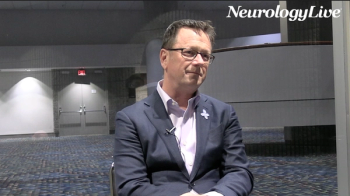
New Acute Migraine Co-Primary End Points Provide Positives for Trial Design
A review of newly implemented primary end points—pain freedom and most bothersome symptom freedom at 2 hours—used in 8 clinical trials may help to guide future migraine researchers in the design of acute treatment trials.
Nada Hindiyeh, MD
Findings from a recently completed review of a number of trials debuting the newest FDA-recommended end points for the acute treatment of migraine suggest the minimum number of patients needed to adequately power trials for statistical significance.1
Nada Hindiyeh, MD, assistant professor of neurology at Stanford University in California, and colleagues found that the use of the newly recommended co-primary end points—pain freedom at 2 hours posttreatment and freedom from most bothersome symptom (MBS) other than pain at 2 hours posttreatment—can lower the required cohort sizes for statistical significance. All told, they found that roughly 180 subjects per arm can provide 80% power to significance.
Notably, the majority of the 8 clinical trials included in the review included far more patients than this, with the subjects per group reaching as high as 751 in some instances. The mean and median group sizes for recent trials using 4 primary end points were 375 and 362, respectively.
“It’s an exciting time in migraine treatment with so many acute treatments on the horizon,” Hindiyeh said in a statement.2 “These data may help to guide future migraine researchers in the design of migraine trials, and clinicians in interpreting these new end points on drug labels.”
In October 2014, the FDA released a draft guidance that offered the option of replacing the previously required 4 co-primary endpoints—pain freedom, freedom from nausea, freedom from photophobia, and freedom from phonophobia, all at 2 hours posttreatment—with the 2 aforementioned co-primary endpoints.3
The analysis showed that the average response rates across all active groups in the included trials were 30.4% for pain freedom and 46.7% for MBS freedom, compared with 16.75% (range, 11.8% to 21.3%) and 32.8% (range, 25.2% to 48.1%), respectively, for the placebo groups. The mean treatment effect ranged from 5.0% to 27.2% for pain freedom and 8.9% to 25.4% for 2-hour freedom from MBS.
Based on a placebo response rate of 17% for pain freedom, the sample sizes that would have been required to achieve statistical significance were n=269, n=128, and n=77, for treatment effect sizes of 10%, 15%, and 20%, respectively. For the MBS, assuming a placebo response rate of 33%, the matching required sample sizes would have been n=389, n=181, and n=105, respectively, for treatment effect sizes of 10%, 15%, and 20%.
“At the time the new draft guidance was released, no large clinical trials had been undertaken with these 2 co-primary endpoints, posing a challenge in determining the sample size that might be required to achieve statistical significance,” Hindiyeh and colleagues wrote. “As a number of trials have now been completed, we conducted a review of the observed placebo responses, drug effect sizes, and sample sizes to better inform the design of future trials.”
Zosano Pharma noted in an announcement that the ZOTRIP trial of its zolmitriptan formulation (Qytripta), delivered with the adhesive dermally applied microarray (ADAM) platform, was one of the trials included in the review. In that trial, 42.5% of those who were given 3.8-mg zolmitriptan achieved pain freedom at 2 hours and 68.3% achieved freedom from their MBS at 2 hours, compared to 14.3% and 42.9%, respectively, in the placebo group.2
The investigators concluded that they anticipate that samples sizes may be more aligned with treatment efficacy as the body of information regarding the use of these new end points grows, which may ultimately enable faster and more cost-effective trials for acute migraine treatments.
REFERENCES
1. Hindiyeh NA, Kellerman DJ, Schmidt PC. Review of acute treatment of migraine trial results with the new FDA endpoints: design implications for future trials. Headache. Published online April 6, 2019. doi: 10.1111/head.13511.
2. Zosano Announces the Publication of an Analysis of Acute Treatments for Migraine in Headache: The Journal of Head and Face Pain [press release]. Fremont, CA: Zosano Pharma Cooperation; Published April 16, 2019. globenewswire.com/news-release/2019/04/16/1804722/0/en/Zosano-Announces-the-Publication-of-an-Analysis-of-Acute-Treatments-for-Migraine-in-Headache-The-Journal-of-Head-and-Face-Pain.html. Accessed April 22, 2019.
3. Guidance for Industry Migraine: Developing Drugs for Acute Treatment. FDA. Published October 2014. regulations.gov/document?D=FDA-2014-D-1540-0002. Accessed April 22, 2019.
Newsletter
Keep your finger on the pulse of neurology—subscribe to NeurologyLive for expert interviews, new data, and breakthrough treatment updates.


































